Statisticians don’t generally feature on “dream dinner party” guest lists but we reckon they ought to.
In this post, we’re celebrating famous statisticians from history, illustrated by the brilliant Adam Murphy of Corpse Talk.
From mathematicians who believed in miracles, to part-time spies, cholera Columbos, and female physicians way ahead of their time, they had a huge impact on the world today.
Florence Nightingale
Everyone knows Florence Nightingale as a nurse, but fewer know her as a leading light in statistics.
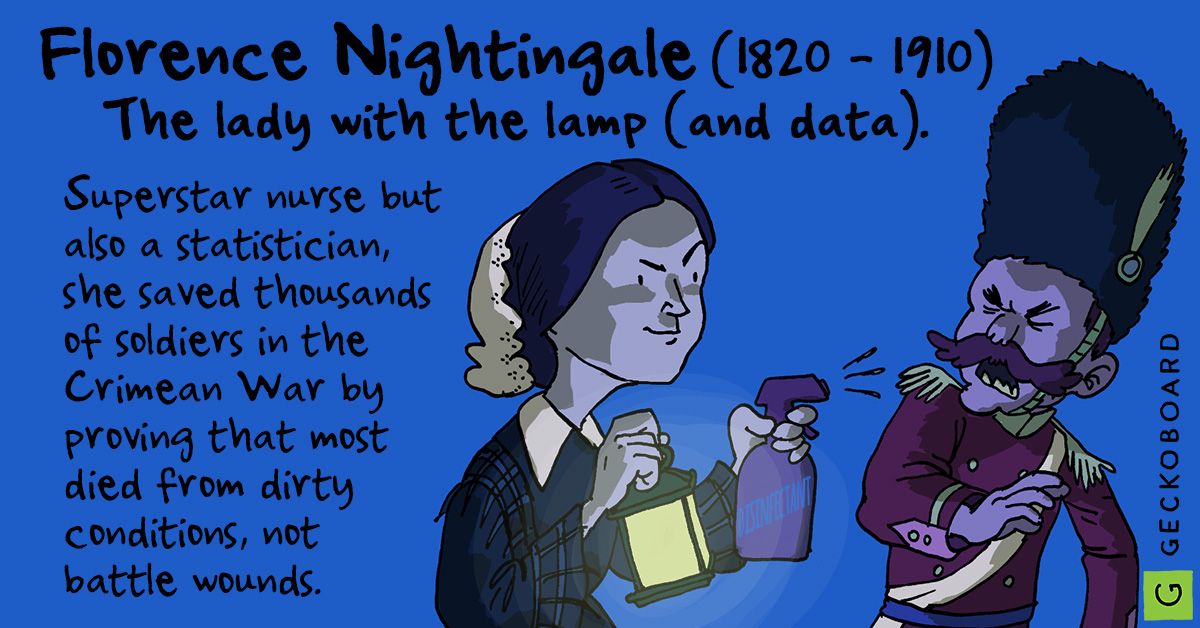
The first female member of the Royal Statistical Society, she analyzed army data in the Crimean War and discovered that 16,000 out of 18,000 deaths were due to preventable diseases caused by poor hygiene - not battle wounds.
Armed with this data, she presented it to government in a pioneering type of chart, making it so clear and compelling that they had to take action.
Thanks to her, thousands of soldiers were saved, sanitary science and statistics departments were founded, and many modern-day principles for nursing were established. What a woman!
William Playfair
Ever wondered who invented the bar, pie, and line graph? It's William Playfair: the dastardly data-viz genius
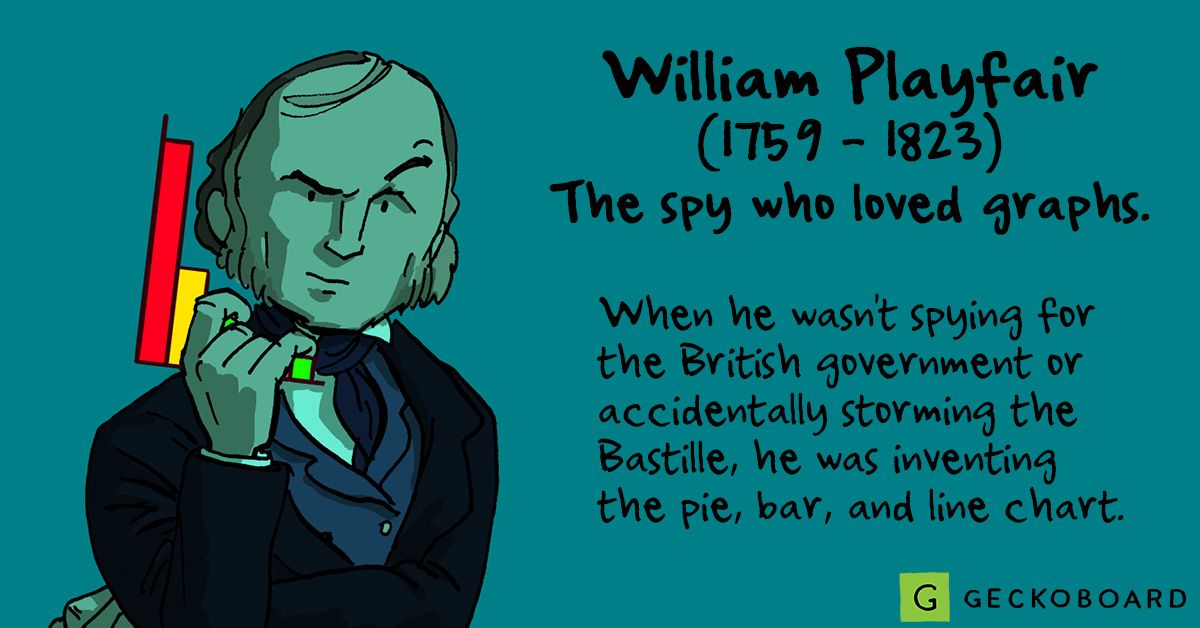
A Scottish engineer, businessman, and spy for the British government, he’s been likened by some to Forrest Gump due to his constant hijacking of historical events. To name a few incidents, he was involved in the storming of the Bastille, plotted to take down the French government with counterfeit currency, and even blackmailed the aristocracy. And they say statistics is boring…
Blaise Pascal
Which ‘P’ has a triangle named after him? Hint 👆. In fact, the mathematical icon has all sorts named after him, from a unit of pressure, to a programming language, and even a crater.
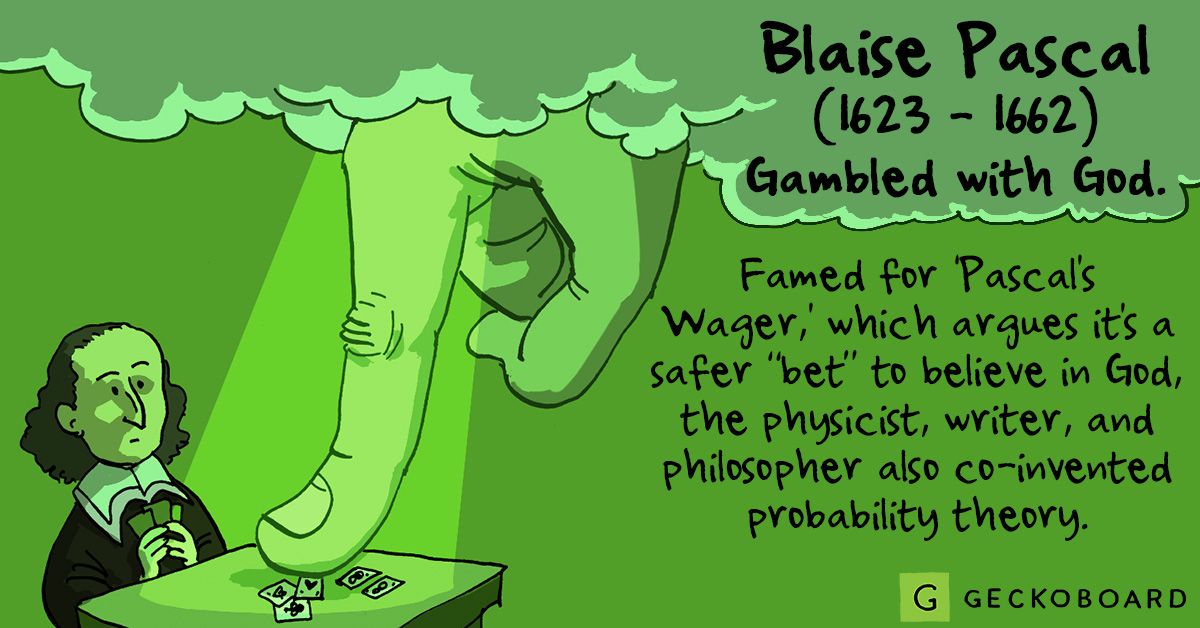
Back to the subject of statistics though, he co-invented probability theory with fellow mathematician Pierre de Fermat whilst aiding an unfortunate gentleman gambler.
He’s also famous for Pascal’s Wager, which argues you’re better off believing in God than risking going to hell. In fact, in 1654 Pascal apparently had a vision of God, prompting him to abandon his scientific work completely. Perhaps he genuinely became devout, or perhaps he was calling God’s bluff...Either way, he was a genius
Florence Nightingale David
Florence Nightingale David. Yep, that’s right: her parents were friends with the original Flo (hence the name) and she too became a statistician.
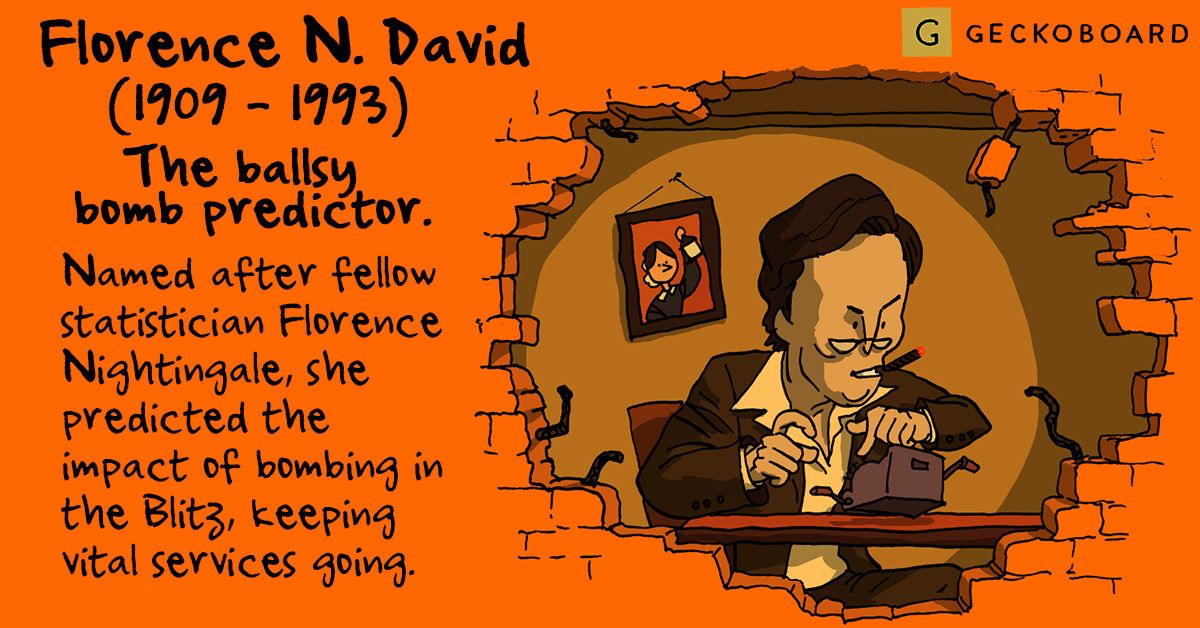
A formidable character fond of cigars, she did her early work on a clunky old calculator called a Brunsviga (pictured), and contended with equally antiquated men when she tried to get a job as an actuary. Her determination paid off though, as she was eventually snapped up by the UK’s Ministry of Home Security in WW2, where she came up with statistical models to predict bomb damage in London.
She later became head of the statistics department at the @uofcalifornia, had more than 100 papers and 10 books published, and even has an award named after her for women in stats.
Despite these incredible achievements she once said of her contributions to statistics: “I don’t like any of them, and I don’t remember many of them.” F.N.David, we salute you.
Dr John Snow
Not to be confused with the Game of Thrones character (or the newsreader), John Snow was a regular Victorian-era Colombo.
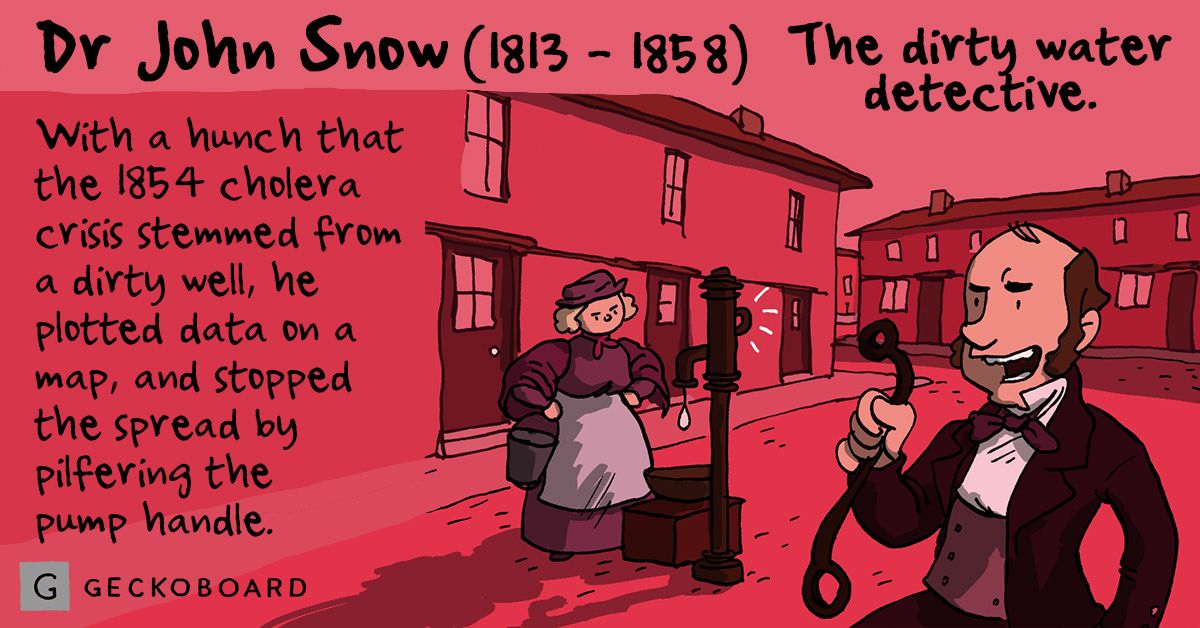
The physician had a hunch that cholera was caused by contaminated water - not “bad air” like most people believed at the time. So, when London was hit with a cholera crisis in 1854, he plotted outbreak data on a map, and traced the source to a single well in Broad Street (now Broadwick Street, for London readers) - which proved his theory.
Though Victorian Londoners probably thought him a crackpot, his theory formed the basis for something we now take for granted: germs. And if that wasn’t enough he was also a pioneer in anesthetics: administering chloroform to Queen Victoria at the birth of her son Leopold.
So, let’s raise a glass (of lovely clean water) to Dr John Snow - or better still a pint at the pub that’s named after him🍺🍺🍺
Dr Janet Lane-Claypon
Another woman who deserves more recognition in the field of statistics is Dr Janet Lane-Claypon.
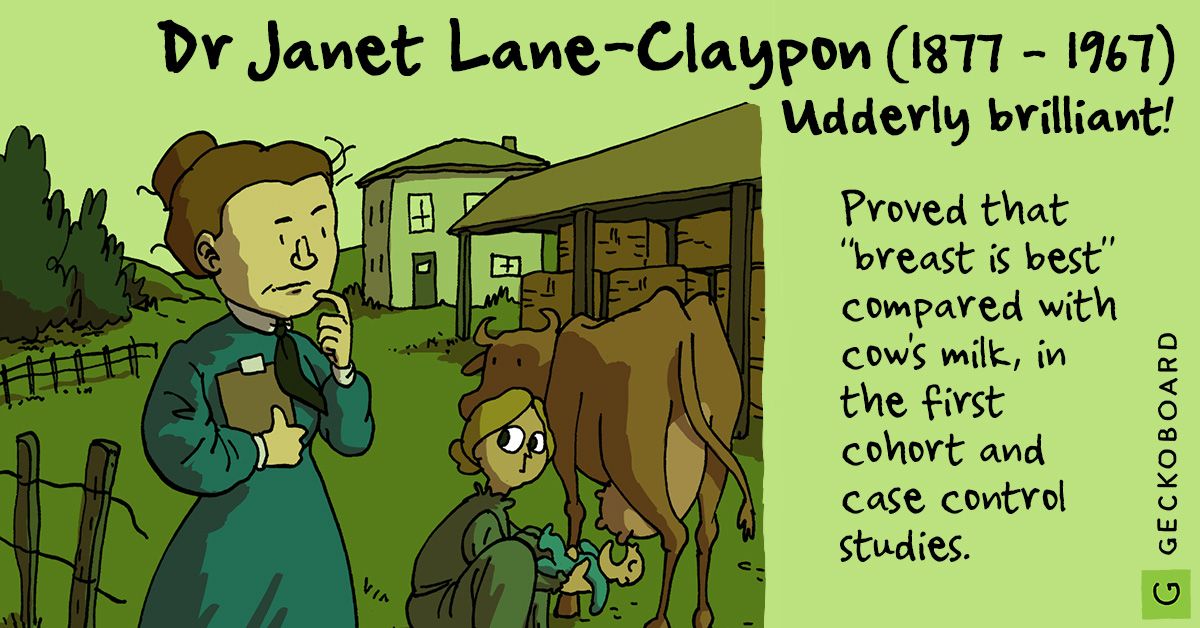
Not only did the physician prove that “breast is best” for babies compared with cow’s milk, she also identified breast cancer risk factors - found to hold true in a 2010 study. It wasn’t just her findings that were amazing though, it was the way she proved them: by using the first cohort and case control studies.
At the time, these were cutting-edge methods, and now - thanks to this barrier-breaking statistician - we can take them for granted, as part of proper medical procedure.
So, let’s raise a glass of milk to Dr Janet Lane-Claypon - whatever type of milk you choose!
Thomas Bayes
Thomas Bayes wasn’t appreciated in his own time, so we're giving him the recognition he deserves.
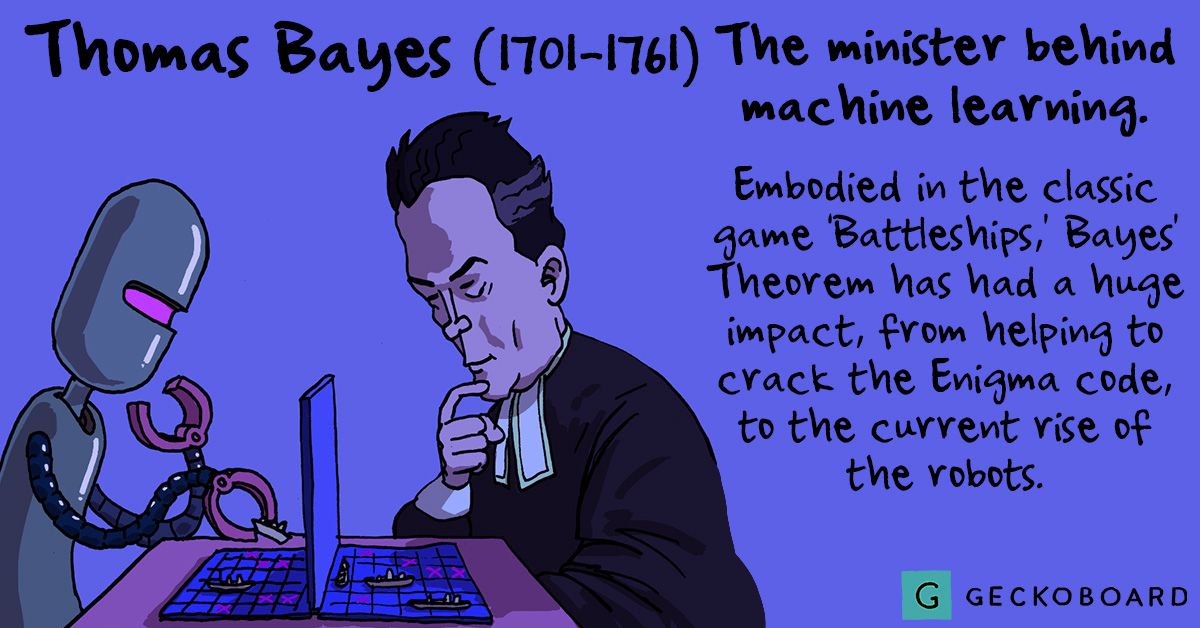
A statistician, philosopher, and Presbyterian minister, he devised Bayes’ Theorem, but this was only published after his death - and even then it was long dismissed as useless.
Centuries later, Bayesian reasoning finally came into its own when it was resurrected by Alan Turing and used to crack the Enigma code. Nowadays, it plays a crucial role in just about everything, from machine-learning, to medicine, and even the war on terrorism.
So, let’s hear it for Bayes - and why not honor him with a classic game of Battleships, which illustrates his theorem rather nicely.
Dr Jerome Cornfield
This stupendous statistician made a cig-nificant discovery (sorry, couldn’t resist). Dr. Jerome Cornfield proved that smoking causes lung cancer, which was obviously groundbreaking, but it’s not so much what he discovered that interests us, it’s the way he discovered it.
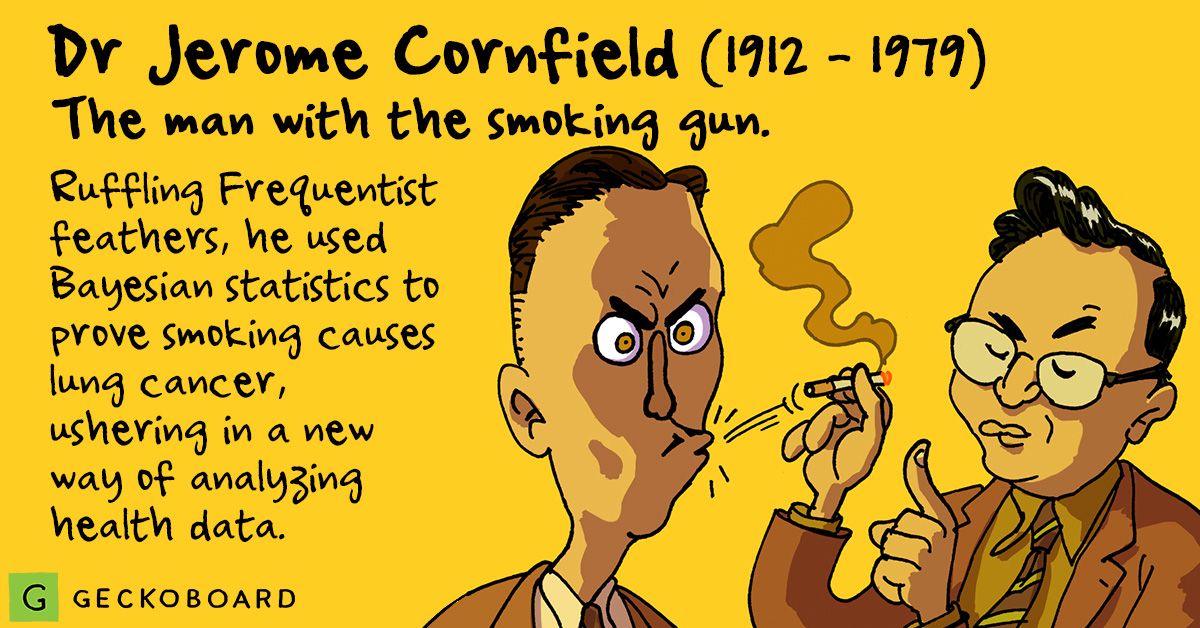
To prove the link he used Bayesian statistics, which the eagle-eyed amongst you will recognize from Thomas Bayes 👆. At the time, this form of reasoning was controversial and caused a real stir in statistical circles, but it’s now used widely in clinical trials and disease research.
No wonder Cornfield was made president of the American Statistical Association - despite not even having a degree in stats!
Think we missed someone? Let us know on Twitter!

